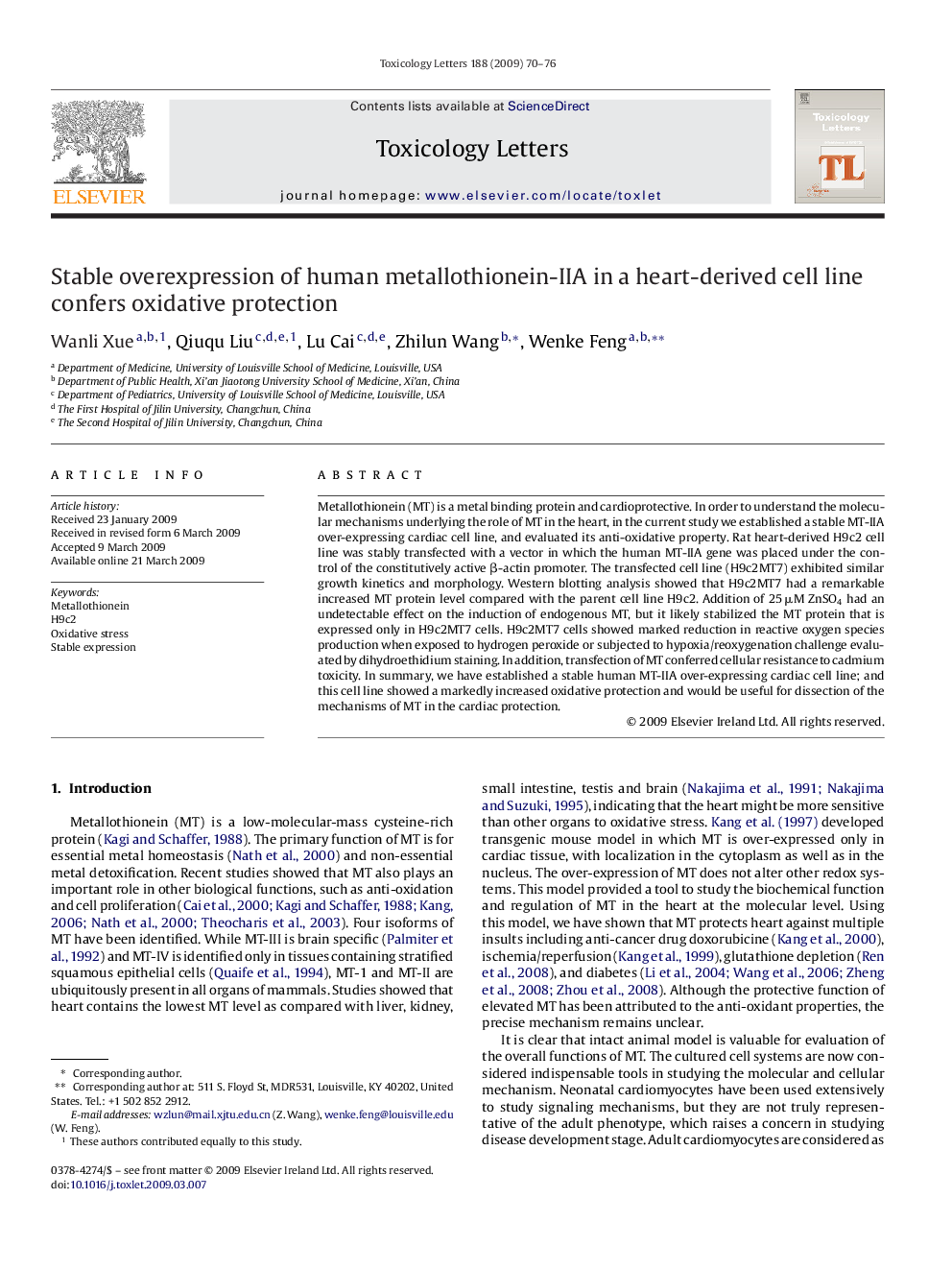| Article ID | Journal | Published Year | Pages | File Type |
|---|---|---|---|---|
| 2601241 | Toxicology Letters | 2009 | 7 Pages |
Metallothionein (MT) is a metal binding protein and cardioprotective. In order to understand the molecular mechanisms underlying the role of MT in the heart, in the current study we established a stable MT-IIA over-expressing cardiac cell line, and evaluated its anti-oxidative property. Rat heart-derived H9c2 cell line was stably transfected with a vector in which the human MT-IIA gene was placed under the control of the constitutively active β-actin promoter. The transfected cell line (H9c2MT7) exhibited similar growth kinetics and morphology. Western blotting analysis showed that H9c2MT7 had a remarkable increased MT protein level compared with the parent cell line H9c2. Addition of 25 μM ZnSO4 had an undetectable effect on the induction of endogenous MT, but it likely stabilized the MT protein that is expressed only in H9c2MT7 cells. H9c2MT7 cells showed marked reduction in reactive oxygen species production when exposed to hydrogen peroxide or subjected to hypoxia/reoxygenation challenge evaluated by dihydroethidium staining. In addition, transfection of MT conferred cellular resistance to cadmium toxicity. In summary, we have established a stable human MT-IIA over-expressing cardiac cell line; and this cell line showed a markedly increased oxidative protection and would be useful for dissection of the mechanisms of MT in the cardiac protection.
